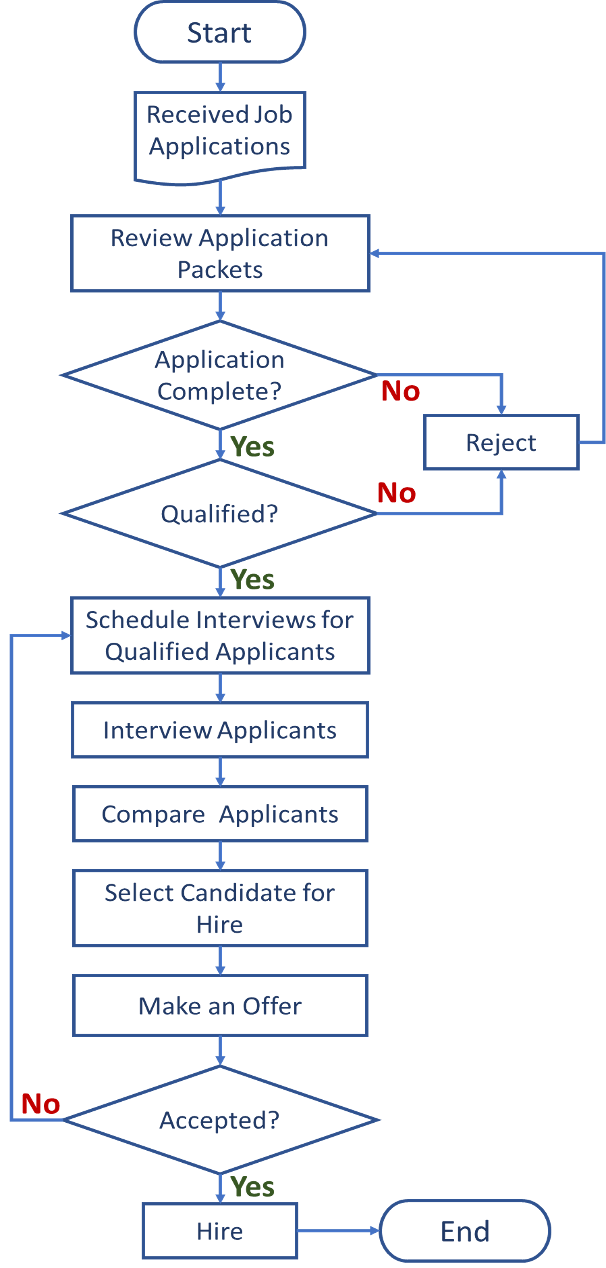Hello again from Ruth Aboagye – UMass Medical School, co-author of 3 blogs when we touched on Facts and Failures and talked in depth about Fishbones and Five Whys. Today, the focus will be on process flows also known as Flowcharts, which visually convey the steps in a process. More importantly, it helps you understand your process and uncovers opportunities for improvement. Used in conjunction with Fishbones and Five Whys, you will develop a tighter, more efficient process eliminating bottlenecks, gaps, weak links, poorly defined, redundant and added-cost-only steps.
Key Points: Clearly define (scope) the process that will be represented in the flowchart.It is vital that you start by depicting the process the way it really works currently, not the way you think it should work. Highlight areas where decisions must be made and parts of the process that are redundant or out of place. Analyze your Flowchart to determine who is involved in the process, form theories about root causes, identify ways to streamline the process and determine how to implement changes to the process. Be very cognizant of rework loops.
Hot Tips: Go to the “Gemba” – where the work is happening – observe the process and ask clarifying questions. Before you start mapping a flowchart, it is a good idea to walk through the current process, observe it in operation and record the steps as they actually occur.Don’t forget to include all “players” in the mapping process, i.e., everyone who has a role, no matter how small, in the process operation.Review and validate the flowchart’s accuracy with individuals actually involved in the execution of the process steps.

Lessons Learned:
- Always start with a “current state” flowchart and finish with an “ideal state” flowchart.
- Depict customer-supplier relationships, helps people involved in the process to understand who their customers are as well as how they are sometimes suppliers or customers themselves.
- When developing a Flowchart, consider how it will be used and the amount and kind of information needed by those who will use it. Remember! The label used to describe the process is not important. What’s important is that the people mapping the Flowchart understand how the information is going to be used and the people interpreting the flowchart understand the level of detail it presents.
- Note, there are numerous methods for mapping Flowcharts and you can use any one of them, as long as you follow these simple guidelines:
- Identify the right people to develop the chart
- Determine what you expect to get from the Flowchart
- Identify who will use it and how
- Define the level of detail needed
- Establish the boundaries of the process to be improved
Repeatability and Reproducibility. Flowcharts are helpful in training employees to routinely perform a process the same way each and every time.
Finally, be transparent. Keep everyone regularly informed. Put standard operating procedures and implementation plans in place to quickly identify and resolve improvement opportunities.
Rad Resources: Use this link to learn more about Flowcharts.
Do you have questions, concerns, kudos, or content to extend this aea365 contribution? Please add them in the comments section for this post on the aea365 webpage so that we may enrich our community of practice. Would you like to submit an aea365 Tip? Please send a note of interest to aea365@eval.org. aea365 is sponsored by the American Evaluation Association and provides a Tip-a-Day by and for evaluators.
